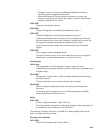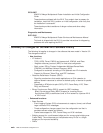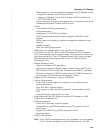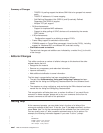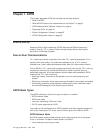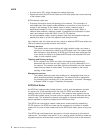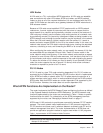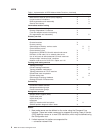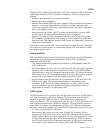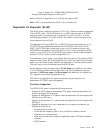
LEN Nodes
A LEN node is a T2.1 node without APPN extensions. A LEN node can establish
peer connections with other LEN nodes, APPN end nodes, and APPN network
nodes, as long as all of the required destination LUs are registered with the LEN
node. A LEN node can also serve as a gateway between an APPN network and a
SNA subarea network.
Because a LEN node cannot establish CP-CP sessions with an APPN network
node server, it cannot register its resources with the server or request that the
server search for a resource and dynamically calculate a route to that resource. A
LEN node may indirectly use the directory and routing services of a network node
by pre-defining remote LUs (owned by nonadjacent nodes) as being located on an
APPN network node, although the actual location may be anywhere in the network.
When the LEN node needs to initiate a session with the remote LU, it sends a
session activation request (BIND) for the LU to the network node. In this case, the
network node acts as the LEN node’s network node server, locating the requested
resource, calculating a route, and forwarding the BIND to its correct destination.
When configuring the router network node, you can specify the names of LUs that
are associated with an attached LEN end node. These LU names reside in the
router network node’s local directory. If the router network node receives a request
to search for one of these LEN end node resources, it will be able to find the LU in
its local directory and return a positive response to the node originating the search.
To reduce the number of LU names you need to specify for an attached LEN end
node, the router supports the use of generic LU names, which allow a wildcard
character to represent a portion of an LU name.
PU 2.0 Nodes
A PU 2.0 node is a type T2.0 node containing dependent LUs. PU 2.0 nodes are
supported by the Dependent LU Requestor (DLUR) function which is implemented
by an APPN end node or network node. PU 2.0 nodes require the services of a
system services control point, which is made available through the DLUR-enabled
APPN node. Note that APPN nodes can contain dependent LUs supported by the
DLUR function. However, the router does not contain dependent LUs.
What APPN Functions Are Implemented on the Router?
The router implements the APPN Release 2 base architecture functions as defined
in the Systems Network Architecture APPN Reference. The APPN network node
functions implemented by the router are summarized in Table 1. Notes on specific
functions follow the table. For a description of the APPN management services
supported by the router, see “Managing a Network Node” on page 17.
APPN uses LU 6.2 protocols to provide peer connectivity between CP-CP session
partners. The router network node implements the LU 6.2 protocols required for
CP-CP sessions and those used in sessions between a network node CP and its
network management focal point. The router implementation of APPN does not
provide an application program interface to support user-written LU 6.2 programs.
Table 1. Implementation of APPN Network Node Functions
APPN Function Yes No Notes
Session services and supporting functions
Multiple CP-CP sessions X
APPN
Chapter 1. APPN 3



